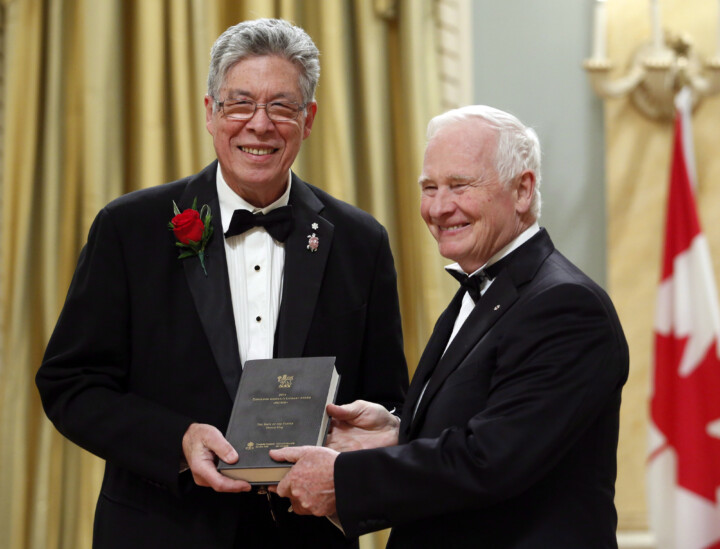‘Our numbers were so much bigger’: How Canada broke its immigration system
Tony Keller, Globe and Mail columnist and author of the new book Borderline Chaos: How Canada Got Immigration Right, and Then Wrong, details how the Canadian government managed to slowly build and then quickly break its once celebrated immigration system, along with Canadians’ historic consensus around welcoming large numbers of people to the country.
You can listen to this episode on Amazon, Apple, and Spotify.
Program Summary
This is an automated summary. Please check against delivery.
Tony Keller, speaking on the Hub Dialogues podcast, outlined how Canada maintained a stable, cross-party consensus on immigration for approximately a quarter century, from the late Mulroney years through the Harper administration, before experiencing what he characterized as an unprecedented surge beginning around 2020. According to Keller, this consensus broke down when immigration rates skyrocketed in response to perceived labor shortages following the pandemic, fundamentally altering a system that had previously enjoyed broad public support.
Keller explained that during the decades of consensus, Canada’s immigration rate was already approximately double to sometimes triple that of the United States, yet Canadians largely supported the system because they believed it was being run for their benefit and that Canada was choosing who entered the country. He compared the situation to plumbing, noting that nobody worries about it when it works properly, but concerns arise when problems emerge.
The transformation began gradually after 2015 when the Trudeau government started raising immigration levels, but the most dramatic changes occurred after the pandemic. Keller stated that between 2022 and 2024, Canada received 3.1 million net immigrants according to Statistics Canada figures. To put this in perspective, he noted this would be equivalent to approximately 26 million people arriving in the United States over the same period, while the U.S. actually received only 8 to 9 million immigrants during those years.
A critical factor in this surge, according to Keller, was the expansion of temporary immigration streams that had previously been negligible. He explained that by 2022, Canada was receiving more temporary residents than permanent residents, and by 2023, the country was accepting approximately twice as many temporary residents as permanent residents. This meant that when the government discussed immigration targets of around 500,000, they were only referencing permanent immigration, while the actual total including temporary residents reached 1.3 million in 2023.

Graphic Credit: Janice Nelson.
Keller identified multiple stakeholders who encouraged the government to dramatically increase immigration levels. Provincial governments, large portions of the higher education sector, business groups, and organizations like the Century Initiative all advocated for higher immigration, primarily citing labor shortages. He noted that the business community was reporting generalized worker shortages across the economy, not just in specific skilled trades.
The Ontario college system became particularly reliant on international students as a revenue source, Keller said. He pointed to a 2017-2018 report commissioned by the provincial Liberal government that identified problems with the college system becoming a vehicle for foreign students to enter Canada, but noted that the subsequent Ford government doubled down on the approach rather than reversing course.
According to Keller, early criticism of the policy changes was largely ignored. He cited a 2016 letter from 15 labor economists to then-Immigration Minister John McCallum outlining concerns and recommendations, which received no response and disappeared without impact. He suggested that immigration decisions were actually being made by the Prime Minister’s Office rather than the immigration minister.
Keller acknowledged that the surge in immigration had some economic benefits, particularly for upper-middle-class consumers who could access cheaper services and deliveries due to increased labor supply in low-wage sectors. However, he argued that the policy put downward pressure on wages at the bottom of the labor market, affecting workers with limited leverage who were competing with newcomers desperate for employment.
The analyst deliberately avoided discussing immigration’s cultural impacts, stating he wanted to focus on economic questions that could unite rather than divide Canadians. He expressed concern that debates about how immigration changes Canadian culture would inevitably become polarizing, whereas discussions about living standards and economic impacts could bring people together around shared interests.
Keller criticized the Trudeau government for framing immigration as a binary choice between supporting or opposing it entirely, rather than engaging in practical discussions about appropriate levels, skills mix, and conditions. He argued this approach was unreasonable and reduced a complex policy question to a matter of values rather than practical governance.
He noted that fear of being accused of racism prevented many observers, including himself, from speaking out earlier about the problems emerging in the immigration system. Keller admitted he delayed writing about the issue in 2021 and 2022, only beginning to address it publicly well into 2023 when other commentators and public opinion also began shifting.
The phrase “take back control,” which Keller noted the Carney government has employed, resonated with him as capturing what bothered Canadians about the situation. He drew parallels to the Brexit campaign, acknowledging that while he considered Brexit a mistake, he understood the appeal of the message to voters who felt things were beyond their control. Canadians had developed a similar sense that the immigration system was no longer being run for their benefit.
Keller expressed cautious optimism that the immigration consensus could be restored, noting that it was important for the Liberal government to make corrections rather than allowing the issue to radicalize Canadian politics with Liberals moving left and Conservatives moving right. He stated that the current government appears to understand what went wrong and has already begun making improvements, though he stopped short of guaranteeing they would fully fix the system.
Did Canada's immigration system break due to rapid expansion, or was it a gradual decline in management?
Who benefited economically from Canada's surge in immigration, and who might have been negatively impacted?
Why did it take so long for concerns about Canada's immigration system to be publicly addressed?




Comments (0)